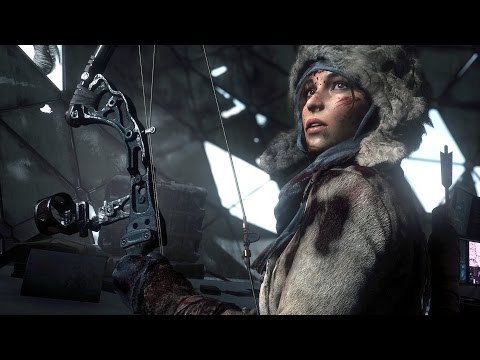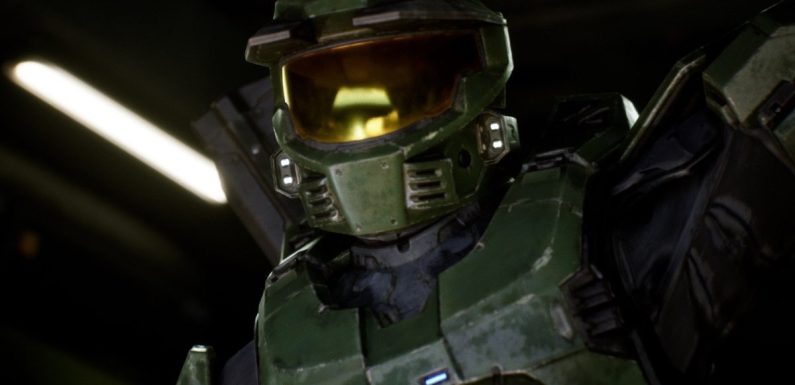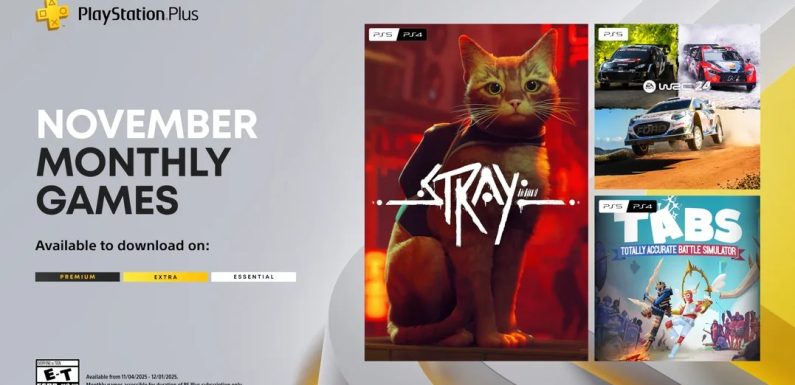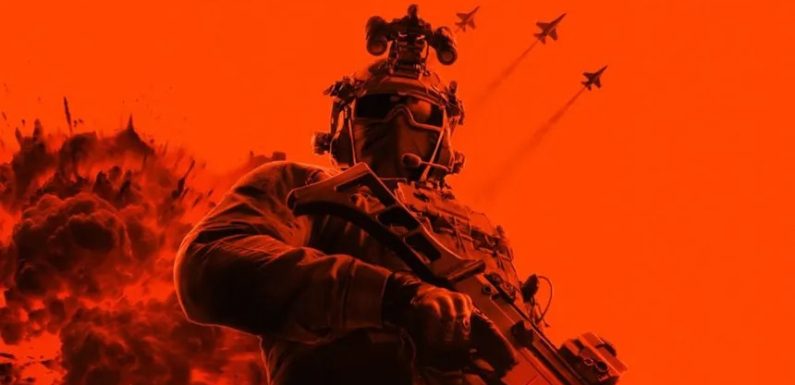
Frostpunk
2
asks
a
simple
question:
what
do
you
do
when
you’ve
survived
the
apocalypse?
Set
30
years
after
the
events
of
the
first
game
the
world
is
still
entombed
in
thick
layers
of
ice
and
snow,
but
now
it’s
no
longer
enough
to
just
survive
–
the
people
wish
to
live
and
thrive.
The
Captain
is
dead,
long
live
the
Steward.
No
pressure.
You’ll
probably
be
tossed
out
of
office
for
letting
the
kids
run
feral
anyway.
The
answer
to
the
question
is
a
new
form
of
society
needs
to
be
built,
one
for
a
world
where
freezing
conditions
remain
a
problem
but
aren’t
the
only
focus.
Throughout
the
5-8
hour
campaign,
it
becomes
obvious
that
Frostpunk
2
is
a
far
bigger
game
in
scope.
No
longer
are
you
placing
single
buildings,
now
you’re
erecting
entire
districts
with
a
few
clicks.
You
aren’t
dealing
with
hundreds
of
people
huddled
around
a
generator,
you’re
dealing
with
thousands
upon
thousands
working
and
living
in
a
vast
city.
No
longer
are
you
building
in
a
small
circle
around
the
life-giving
warmth
of
a
mechanical
beast,
you’re
sprawling
out
across
the
landscape
like
a
spider-web.
And
no
longer
are
you
the
sole
judge
of
what
is
right
and
wrong,
as
various
factions
cast
their
votes
on
laws
and
have
their
own
views
on
what
must
be
done.
Platforms:
PC
(Xbox
and
PlayStation
coming)
Reviewed
On:
PC
Developed
By:
11Bit
Studios
Published
By:
11Bit
Studios
Review
code
provided
by
the
publisher
Frostpunk
2
does
often
lose
that
sense
of
intimacy
that
the
original
had,
and
with
it
the
streamlined
yet
incredibly
satisfying
gameplay.
Frostpunk
2
is
bigger,
grander
and
far
more
complex,
but
not
always
better.
It’s
already
proving
itself
to
be
hugely
divisive
among
fans,
and
I
have
to
say,
I
think
I’m
one
of
the
people
who
doesn’t
like
it.
Which
isn’t
to
say
it’s
a
bad
game
–
it’s
actually
pretty
amazing.
But
it
isn’t
what
I
was
looking
for
in
a
Frostpunk
sequel.
At
least,
not
right
now.
I
have
a
feeling
I’ll
go
back
to
Frostpunk
2
sometime
in
the
future
when
my
brain
isn’t
already
working
at
100mph,
trying
its
hardest
to
make
me
hate
myself.
Right
now,
the
bickering
factions,
the
constant
teetering
on
the
brink
of
failure
and
overwhelming
amount
of
things
going
on
in
Frostpunk
2
are
not
what
my
mind
needs.
And
that’s
on
me.
I’m
going
to
try
not
to
cloud
this
review
too
much
with
my
own
bullshit.
My
excuses
as
to
why
I
became
a
rampaging
tyrant
intent
on
bundling
up
a
chunk
of
my
population
into
prisons
and
exiling
the
rest
are
less
compelling,
though.
To
be
blunt,
everyone
kept
bickering
and
kept
getting
in
the
way.
One
day
you’re
signing
a
law
that
says
mothers
are
exempt
from
work
so
they
can
raise
their
children
(it
never
said
anything
about
mothers
being
questioned
if
they
were
spotted
in
public
without
their
kids
until
I
heard
just
that
happening
over
a
loudspeaker)
and
the
next
you’re
forcibly
squashing
protests
and
furiously
running
a
smear
campaign
against
the
Pilgrims
because
they
keep
shutting
down
the
food
industry
with
their
bullshit.
I’m
just
saying,
it’s
a
slippery
slope,
okay?

It’s
also
a
very
different
game
from
its
predecessor.
If
you
come
into
Frostpunk
2
expecting
it
to
be
a
regular
type
of
sequel
that
builds
on
what
came
before
while
adding
some
new
things,
there’s
a
reasonable
chance
that
you’re
going
to
wind
up
hating
it.
This
sequel
tosses
out
a
lot
of
the
gameplay
elements,
resulting
in
less
of
a
survival
city-builder
and
more
political
management
game
with
survival
elements.
You’re
dealing
with
the
macro
now,
baby,
not
the
micro.
Side
note:
that
last
sentence
is
not
a
chat-up
line,
no
matter
how
much
you
want
it
to
be
–
trust
me.
One
thing
that
hasn’t
changed
though,
is
the
constant
sense
that
you’re
about
five
seconds
away
at
all
times
from
the
city
imploding.
There’s
never
enough
resources
to
go
around,
never
enough
housing
for
the
growing
population,
never
enough
fuel
to
survive
a
whiteout,
never
enough
trust
in
your
leadership.
It’s
the
kind
of
constant
stress
that
you’ll
either
thrive
on
or
crumble
under,
because
like
Frostpunk
1,
Frostpunk
2
is
not
a
fun
game
in
the
traditional
sense.
Having
said
that,
there
are
a
few
sprinkles
of
dark
humour
that
can
pop
up
from
time
to
time
and
elicit
a
genuine
laugh.
Let’s
start
with
the
basics
of
building
your
frozen
utopia.
Immediately
the
prologue
introduces
the
concept
of
Frostbreaking,
meaning
you
have
to
spend
some
workforce
and
Heatstamps,
which
act
as
a
new
form
of
currency,
to
deploy
massive
machines
which
carve
through
the
snow
and
ice
so
that
you
can
build.
Once
done,
you’re
free
to
begin
erecting
districts
by
clicking
on
a
few
hexagons
until
enough
ground
has
been
selected.
Housing,
extraction,
industrial
and
food
are
all
handled
this
way,
and
they
various
bonuses
and
debuffs
when
placed
beside
each
other.
Special
hub
buildings
can
be
plopped
on
individual
hexagons
and
apply
massive
buffs
to
districts,
so
planning
how
to
maximise
their
placement
is
critical.

There’s
an
interesting
mechanic
at
play
where
building
a
district
over
multiple
resource
nodes
doesn’t
increase
how
many
resources
you
get
–
it
just
means
you’ll
have
a
bigger
pool
of
resources
to
draw
from.
If
you
want
to
grab
the
resources
quicker
you’ll
need
to
divide
nodes
among
multiple
districts,
but
each
district
you
build
ramps
up
the
workforce
cost,
the
heat
needed,
the
materials
and
so
on.
There’s
also
the
idea
that
growth
requires
growth
to
sustain
itself.
Take
the
production
of
goods
for
example
–
these
luxury
items
help
stem
unrest
and
increase
how
many
Heatstamps
you
get
from
the
population.
To
make
more,
you
need
industrial
districts
which
turn
extracted
materials
into
goods.
To
get
more
materials
you
need
to
extract
them
which
means
more
heat
is
needed
and
more
workforce,
which
means
more
housing
which
means
even
more
heat
and
materials
and
food
and
goods
are
needed
to
keep
the
people
happy,
and
that
means
getting
more
fuel
which
in
turns
means
another
extraction
district
which
needs
more
heat
and
materials.
It
never
ends,
and
no
matter
what
I
did
it
felt
like
I
was
endlessly
falling
forwards
into
a
stumbling
run,
only
just
keeping
ahead
of
the
giant
boulder
rolling
after
me.
And
while
all
of
this
is
happening,
there’s
the
ever-present
threat
of
another
drop
in
temperature
or
a
full-blown
whiteout
that’ll
wreck
your
shit
if
you
don’t
have
enough
resources
stockpiled.
It’s
exhausting.
Frostpunk
2
is
the
kind
of
game
where
you
can
feel
tired
after
playing
it
because
it’s
so
mentally
taxing,
especially
if
you
ramp
up
the
difficulty
or
just
make
a
few
bad
choices.
The
problem
is,
much
like
the
first
game,
you
won’t
know
you’ve
made
bad
choices
sometimes
until
the
resulting
snowball
of
destruction
fucks
everything
up
in
spectacular
fashion.
It
can
be
frustrating
to
realise
that
what
lead
to
an
impossible
scenario
occurred
an
hour
or
two
ago
with
no
real
way
of
you
ever
knowing
that
was
the
case,
and
now
it’s
too
late
to
fix.
Some
people
will
love
this
and
happily
fire
up
an
earlier
save
or
restart
the
chapter.
Others
will
curse
the
developers.
And
then
begrudgingly
fire
up
an
earlier
save
or
restart
the
chapter,
because
gamers
are
often
nothing
if
not
gluttons
for
punishment.

Squalor
and
disease
also
have
to
be
factored
in
because
throwing
down
districts,
expanding
them,
adding
optional
buildings
to
them
and
a
host
of
other
things
can
and
will
raise
the
squalor
and
disease,
both
of
which
hurt
your
community.
These
can
be
countered
by
researching
and
erecting
upgrades
in
districts,
but
guess
what?
Yup,
that
means
more
resources.
I
quickly
realised
that
my
starting
city
just
can’t
support
all
these
people.
That’s
where
exploring
the
Frostlands
comes
into
play.
By
sending
out
scouts
you
can
visit
dozens
of
other
locations
that
might
offer
solutions
to
your
issues,
whether
it’s
groups
or
people
looking
for
a
home
or
a
handy
group
of
seals
that
could
be
farmed
for
food.
But
now
there’s
also
the
possibility
of
discovering
and
settling
new
colonies,
adding
to
your
never-ending
stress
by
giving
you
something
else
to
worry
about.
Well,
almost
–
these
secondary
places
seem
to
run
on
slightly
different
rules.
Early
in
the
story
mode,
for
example,
you
stumble
across
an
abandoned
Dreadnought
and
can
send
colonists
to
begin
utilising
its
resources,
and
I
discovered
that
it
seems
to
operate
on
more
generous
rules
as
I
was
able
to
leave
it
cold,
without
food
and
starved
of
everything
else
without
many
issues.
Most
problems
that
popped
up
in
secondary
colonies,
at
least
for
me,
were
story-related
events.
That
said,
you
do
still
need
to
keep
an
eye
on
them
and
transfer
some
resources
around
via
pathways
built
in
the
Frostlands.
Just
like
Frostpunk
one
of
the
biggest
priorities
is
constantly
feeding
the
massive
generator
at
the
centre
of
your
city
so
that
it
will
supply
the
heat
needed
to
survive.
Unlike
Frostpunk
though,
you
don’t
need
to
stare
at
a
heatmap
as
the
game
handles
that
automatically
–
all
you
have
now
is
a
bar
indicating
whether
you’re
meeting
the
heating
demand
or
not.
That
same
demand
and
supply
concept
is
applied
to
every
resource
in
the
game,
and
I
admit
to
finding
it
a
tad
nebulous.
In
Frostpunk
it
always
seemed
like
I
could
see
exactly
how
everything
was
affecting
everything
else,
whereas
here
it’s
more
vague.
Heating
my
city,
however,
is
where
I
became
aware
of
a
fairly
large
bug
that
was
working
in
the
background.
Basically,
the
game’s
heating
calculations
are
off,
at
least
for
me
and
some
others
on
Steam,
and
the
result
was
a
city
needing
far
more
heat
than
it
actually
needed.
It’s
not
the
only
bug
or
thing
that
caused
problems
either.
The
biggest
issue
though,
is
how
much
of
a
performance
hog
Frostpunk
2
can
be.
It
can
tax
your
hardware
and
run
the
CPU
hot,
so
be
careful.
Luckily,
it’s
not
the
kind
of
game
that
benefits
from
a
high
framerate,
so
I
was
happy
enough
to
cap
it
low.
Still,
some
optimisation
work
is
sorely
needed.

Politics
had
a
place
in
the
original
Frostpunk
but
this
time,
there’s
a
much
heavier
emphasis
on
managing
multiple
factions,
all
with
their
own
vision
of
the
future,
ideologies
and
morality.
The
Stalwarts,
for
example,
believe
technology
is
the
key
to
defeating
the
frost,
pushing
laws
and
ideals
that
will
bolster
the
workforce
through
mechanical
aid,
to
create
a
bigger
and
better
city.
The
Pilgrims
are
the
opposite,
believing
that
we
must
adapt
to
the
frost
and
focus
on
expanding
into
frozen
wastelands,
setting
up
small
colonies
so
that
no
single
event
can
wipe
out
humanity.
The
game’s
main
story
campaign
heavily
revolves
around
the
Stalwarts
and
the
Pilgrims,
as
shown
by
a
very
early
choice
you
make
about
whether
to
change
the
generator
to
run
purely
on
oil,
or
to
go
down
the
Pilgrim’s
route
and
allow
multiple
fuel
sources.
Other
factions
spring
up
too,
and
hold
their
own
unique
views
which
contradict
the
others.
And
as
you
play,
splinter
groups
can
form
based
on
the
decisions
you
make,
become
radicalized
and
create
chaos.
Entire
districts
can
be
shut
down
because
of
mass
protests,
and
if
the
tensions
grows
too
great
because
of
unrest,
cold
and
missing
resources
then
civil
war
can
erupt.
In
Frostpunk
you
were
able
to
write
laws
into
existence
on
a
whim,
deciding
whether
to
send
the
children
to
the
mines
or
toss
sawdust
in
the
soup.
Frostpunk
2
changes
that
by
introducing
the
council
where
the
city’s
various
factions
will
vote
on
whether
to
pass
a
proposed
law
or
not.
To
ensure
your
plans
come
together
you
can
negotiate
with
factions,
promising
them
things
like
completing
specific
research
in
the
vast
tech
tree,
passing
a
law
they
favour
or
changing
something
in
the
city.
Sometimes
this
works
out
perfectly
because
you
might
promise
them
something
you
were
already
planning
on
doing,
but
more
often
than
not
it’ll
be
something
you
don’t
really
want
to
do.
And
just
like
every
other
decision
you
make,
the
other
factions
probably
won’t
be
happy
with
your
promises,
either.
And
I
do
mean
every
decision.
Every
technology
you
research,
every
district
you
construct,
every
law
passed
and
every
event
that
demands
you
make
a
choice
influences
how
the
factions
view
you.
You
can,
if
you
want,
focus
on
one
particular
faction,
perhaps
the
one
you
most
morally
align
with
and
aim
toward
growing
it
while
pushing
out
the
others.
But
the
foundations
for
a
good
relationship
are
often
the
tombstones
for
another.
As
you
support
one
faction
the
others
will
grow
restless
and
cause
problems,
driving
down
trust
and
potentially
getting
you
exiled.

Opt
for
certain
paths,
laws
and
technology
and
you
could
even
reclaim
the
powers
of
the
Captain
and
begin
slowly
driving
out
a
faction,
arresting
its
members
and
imposing
marshal
law.
It’s
a
tempting
option
given
how
fucking
irritating
the
factions
can
actually
be
with
their
often
nonsensical
demands
and
complete
ignorance
of
what’s
actually
happening.
That’s
a
difficult
path
to
tread
though,
and
it
feels
more
like
the
game
wants
you
to
perform
a
tricky
moral
juggling
act
between
all
the
factions.
After
all,
ignoring
a
good
chunk
of
your
population
probably
isn’t
the
smartest
thing
to
do.
It’s
this
juggling
act
that
killed
my
enjoyment
of
the
game,
simply
because
it
felt
like
I
was
pinball
aimlessly
bouncing
around
and
reacting
to
the
whims
of
a
bunch
of
idiots
who
would
blankly
ignore
reality
to
chase
their
ideals.
Maybe
that’s
the
idea,
though.
Frostpunk
2
makes
it
pretty
clear
that
you
can’t
keep
everyone
happy,
that
you
can’t
save
everyone
because
it
just
isn’t
possible.
Try
to
please
every
faction
all
the
time
and
you’ll
wind
up
struggling
to
unlock
the
best
technology
or
being
unable
to
enact
laws
that
are
needed
for
survival.
Attempt
to
make
one
faction
dominant,
and
you
risk
alienating
everyone
else,
and
it
can
even
lead
to
that
faction
becoming
idolised,
which
brings
its
own
problems
as
it
become
too
powerful.
Maybe
the
real
point
is
that
humans
aren’t
great
en
masse,
because
not
all
cultures
can
co-exist
when
their
core
values
are
so
radically
different
to
each
other.
It’s
philosophical
musings
like
this
that
make
Frostpunk
2
feel
a
little
closer
to
the
first
game,
itself
an
experience
that
made
me
contemplate
morality
a
lot
while
I
was
busy
ordering
sawdust
to
be
put
into
the
soup.
Mind
you,
in
Frostpunk
2
the
kinds
of
decisions
that
would
make
me
pause
for
thought
in
the
first
game
barely
even
register
anymore
–
human
experimentation?
Sure,
why
not?
I’ve
already
introduced
a
bunch
of
laws
I
didn’t
want
anyway
to
satisfy
a
huge
portion
of
the
population,
so
why
not
one
more?
Outside
of
the
main
story
mode,
there’s
a
series
of
scenarios
to
be
played
through
that
dump
you
onto
a
map
with
an
objective
and
just
let
you
get
on
with
it.
In
some
ways
I
enjoyed
this
more
than
the
somewhat
lackluster
story
(which
wraps
up
in
an
unsatisfying
flurry)
because
I
didn’t
have
to
worry
about
events
popping
up
and
could
enjoy
the
various
systems
and
how
they
interact
with
each
other
more.
There’s
plenty
of
factions
that
can
pop
up,
and
it’s
interesting
to
see
how
they
play
off
of
each
other.
In
Conclusion…
Frostpunk
2
is
a
confusing
game.
I
didn’t
like
it
very
much,
but
I
can’t
deny
that
it
is
a
good
game,
filled
with
intriguing
design
decisions.
It’s
overwhelming
at
times,
packed
with
a
lot
of
things
to
track
and
keep
a
wary
eye
on.
It’s
a
less
intimate
game
in
many
regards,
echoing
the
famous
quote
from
Joseph
Stalin:
“A
Single
Death
Is
a
Tragedy;
A
Million
Deaths
Is
a
Statistic.”
As
the
size
of
my
city
grows
past
50,000
people,
I
realise
he’s
right.
A
dozen
people
dying
in
Frostpunk
because
of
my
actions
felt
gruelling.
Here,
it’s
another
pop-up
amongst
many,
and
the
city
will
have
grown
by
a
few
hundred
by
tomorrow
anyway.
So,
should
you
play
Frostpunk
2?
It’s
difficult
to
say,
because
it
depends
on
whether
you
can
accept
how
radically
different
it
feels
to
play.
Nobody
can
deny
the
balls
on
11Bit,
though
–
this
is
a
sequel
that
isn’t
afraid
of
change,
taking
everything
that
made
the
first
game
special
and
growing
it,
sometimes
to
the
point
of
being
unrecognisable.
There’s
a
lot
going
on
in
Frostpunk
2,
and
those
systems
can
create
magic.
But
they
can
also
lead
to
frustration,
or
feeling
disconnected
from
the
city
and
its
people.










